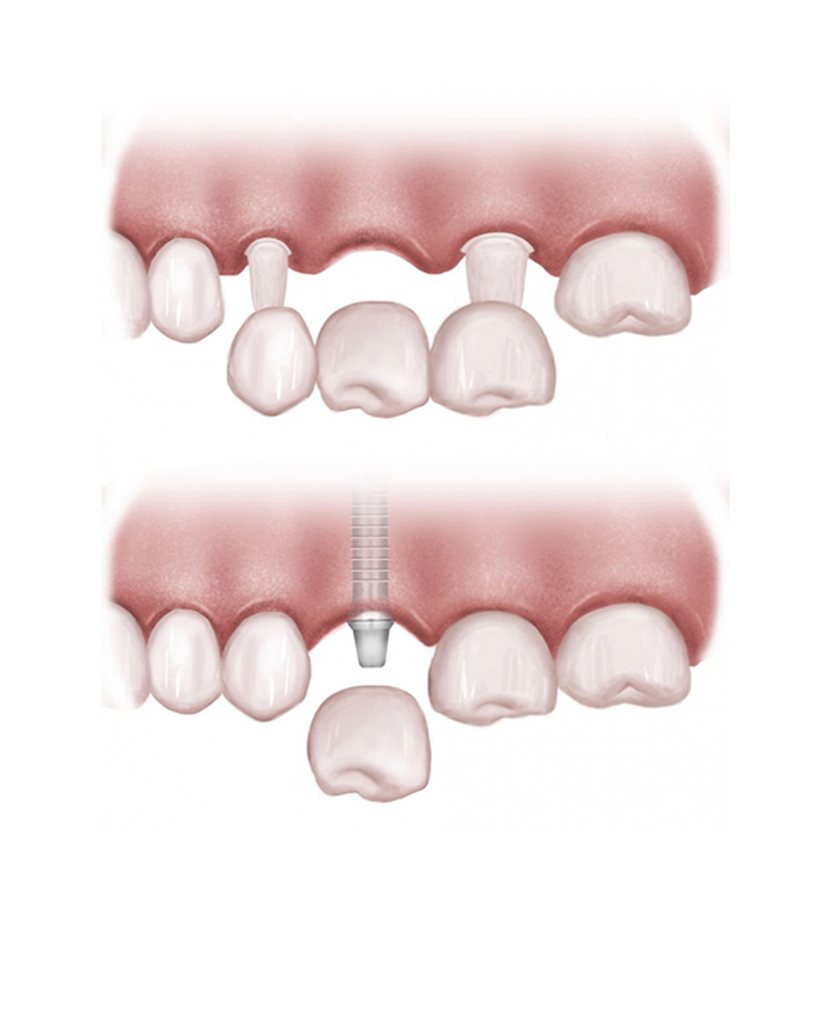Guide to Posterior Implants
The information in the Guide to Posterior Implants provides a comprehensive explanation of the consequences of missing teeth, a comparison of dental implants and bridges, and a detailed description of posterior implant procedures. We encourage you to review all of the pages to help you make an informed decision about your treatment options.
Dental implant treatment is the preferred method of tooth replacement in most situations, even when the adjacent teeth have restorations or crowns. In fact, multiple studies in the scientific literature demonstrate that the long-term success of individual crowns is much better than if the teeth are tied into a tooth-supported bridge. The biting force applied to the adjacent teeth cut down for a bridge is stronger, and therefore more damaging, because these teeth must absorb the force intended for the tooth that is missing as well.
Some of the many benefits of posterior dental implant treatment include, preserving the bone by replacing the tooth root, protecting the adjacent natural teeth, and maintaining the proper overall bite and function of the teeth and jaw joints. No additional teeth are affects, so a one-tooth problem remains a one-tooth problem. It is also much more hygienic to have an implant supported crown that is cleaned like a natural tooth, as opposed to any other type of tooth replacement, and the dental implant will not decay.
The photos below, courtesy of Dr. Aldo Leopardi, illustrate natural-looking replacement of a posterior tooth (far right) with a dental implant and crown.
Advantages of a Dental Implant vs. a Bridge

Advantages of Dental Implants
- Dental implant treatment is the only solution that preserves bone
- Dental implant and crown protects the adjacent teeth
- There is no compromise to the health of adjacent teeth
- Dental implant restorations have a much better long-term prognosis
- The ADA quotes a 10 year life span for bridges
- Documented clinical studies indicate a success rate for dental implants of 95-98% for 20-50 years
Disadvantages of Bridges
- Long-term health of adjacent teeth is compromised by removing the enamel and placing additional forces on these teeth
- Difficult to clean and the teeth are susceptible to decay, root canals and gum problems
- Bridges typically need to be replaced every ten years (average). Each time the bridge is replaced more tooth structure is removed.
- When bridges fail, additional teeth are often affected and more extensive treatment is usually necessary
Disadvantages of Dental Implants
- More planning and treatment time is required
- Treatment requires a surgical procedure
Advantages of Bridges
- Less planning and treatment time involved
- No surgical procedure is required